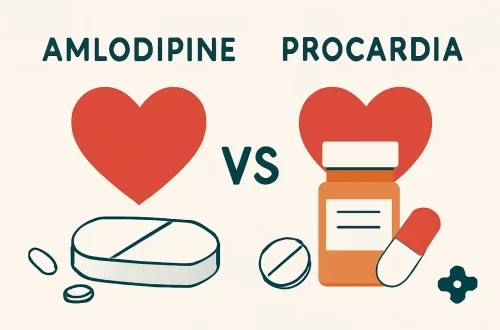
Understanding Why Your Cat Won’t Drink Water and How to Help
Understanding a cat’s drinking habits can be a perplexing task for many cat owners. While we often assume that our furry companions will instinctively drink water when they need it, this isn’t always the case. Cats are notorious for their selective drinking behaviors, which can lead to concerns about dehydration and overall health. The instinctual behaviors of felines, combined with their unique evolutionary history, contribute to their sometimes puzzling relationship with water.
Unlike dogs, cats are desert animals by nature, and their ancestors evolved to obtain most of their hydration from their prey. This instinct can make them less inclined to drink from a bowl. Moreover, factors such as their environment, the availability and quality of water, and even their diet can significantly influence their drinking habits. Understanding these factors is crucial for ensuring that your cat remains hydrated and healthy. Not only does proper hydration affect their physical health, but it also influences their mood and behavior. Recognizing the signs of dehydration and knowing how to encourage your cat to drink more water can make a significant difference in their well-being.
In this article, we will explore the reasons behind a cat’s reluctance to drink water and offer practical solutions to ensure your feline friend stays well-hydrated.
Common Reasons Cats Avoid Drinking Water
There are numerous reasons why cats may not drink enough water. One of the most prevalent reasons is their instinctual behavior. Cats have a natural tendency to derive moisture from their food, especially if they consume a diet high in protein and moisture, such as wet cat food. This instinct from their wild ancestors influences their drinking habits today. They may see little need to drink water if they believe they are getting enough hydration from their diet.
Another factor is the water’s taste and temperature. Cats are quite particular about their water. They may refuse to drink if the water is stagnant or has an unusual odor or taste. Additionally, some cats prefer fresh, cool water over room temperature or warm water. Using a clean bowl and ensuring that the water is changed frequently can help address this issue.
Environmental factors also play a significant role in a cat’s drinking behavior. Cats are sensitive to their surroundings, and if they feel stressed or anxious, they may avoid drinking. Factors such as loud noises, changes in routine, or even the presence of other pets can create an uncomfortable atmosphere, prompting your cat to refrain from drinking.
Lastly, health issues can affect your cat’s water intake. Conditions such as kidney disease, diabetes, or dental problems can make drinking painful or uncomfortable. If you notice a sudden change in your cat’s drinking habits, it is crucial to consult with a veterinarian to rule out any underlying health concerns.
Encouraging Your Cat to Drink More Water
If your cat is reluctant to drink water, there are several strategies you can implement to encourage them. One effective method is to provide multiple water sources throughout your home. Cats are more likely to drink if they have easy access to fresh water in various locations. Consider placing water bowls in different rooms, ensuring they are away from their food and litter box to create a more appealing environment.
Another strategy is to invest in a cat water fountain. Many cats are attracted to running water, which can stimulate their instinctual desire to drink. Water fountains can also keep the water fresh and cool, addressing your cat’s preference for clean water. Observe your cat’s behavior; they may be more inclined to drink if they have a fountain that mimics a natural water source.
You can also consider incorporating wet food into their diet if you haven’t already. Wet food contains a significant amount of moisture, which can help supplement their water intake. Additionally, you might try adding water or low-sodium broth to their dry food to increase moisture content.
Using flavor enhancers can also encourage drinking. Some cats enjoy the taste of certain additives, such as tuna juice or chicken broth. Just be sure to use these additives sparingly and ensure they are safe for your cat.
Lastly, routine and environment matter. Create a calm and quiet space for your cat to drink. Reduce stressors in their environment, and establish a routine that includes regular feeding and drinking times. This approach can help your cat feel more secure and encourage them to hydrate regularly.
Signs of Dehydration in Cats
Recognizing the signs of dehydration in cats is vital for their health and well-being. Cats can become dehydrated quickly, and it is essential for owners to be aware of the symptoms. One of the most common signs is a change in behavior. If your cat becomes lethargic, less active, or loses interest in play, it may be a sign of dehydration.
Physical signs to look for include dry gums and a lack of elasticity in the skin. You can perform a simple test by gently pinching the skin at the back of your cat’s neck. If the skin does not quickly return to its normal position, it may indicate dehydration. Additionally, monitor your cat’s urination habits. If you notice a decrease in the frequency or volume of urination, it could be a sign that your cat is not drinking enough water.
Other indicators of dehydration include a decreased appetite, sunken eyes, and a dry nose. If your cat exhibits any of these symptoms, it is crucial to seek veterinary advice. Dehydration can lead to severe health issues, and prompt action is necessary to address the problem.
Regular vet check-ups can help monitor your cat’s health and hydration levels. Be proactive in discussing your cat’s drinking habits with your veterinarian, especially if you notice any changes.
Preventative Measures for Maintaining Hydration
Preventing dehydration in cats requires a proactive approach to their diet and lifestyle. One of the most effective ways is to ensure your cat has constant access to fresh water. Change their water at least once a day to keep it clean and appealing. Consider using shallow bowls, as some cats prefer these over deep ones.
Diet is another crucial factor. If your cat primarily eats dry food, consider mixing in wet food or transitioning to a high-quality wet food diet. Look for options that contain high moisture content, which can significantly contribute to their hydration levels.
Regular playtime and exercise can also encourage hydration. Engaging your cat in physical activities can stimulate their thirst response. Playtime can help them burn energy and subsequently prompt them to drink more water.
Creating a comfortable and stress-free environment is essential for your cat’s overall well-being. Reduce noise and provide safe spaces for your cat to retreat to when they feel overwhelmed. A calm cat is more likely to maintain healthy drinking habits.
Lastly, consider consulting with your veterinarian about hydration strategies tailored specifically for your cat. They can provide insights based on your cat’s individual needs and health status.
—
This article is intended for informational purposes only and should not be considered medical advice. For any health concerns regarding your cat, please consult a qualified veterinarian.




